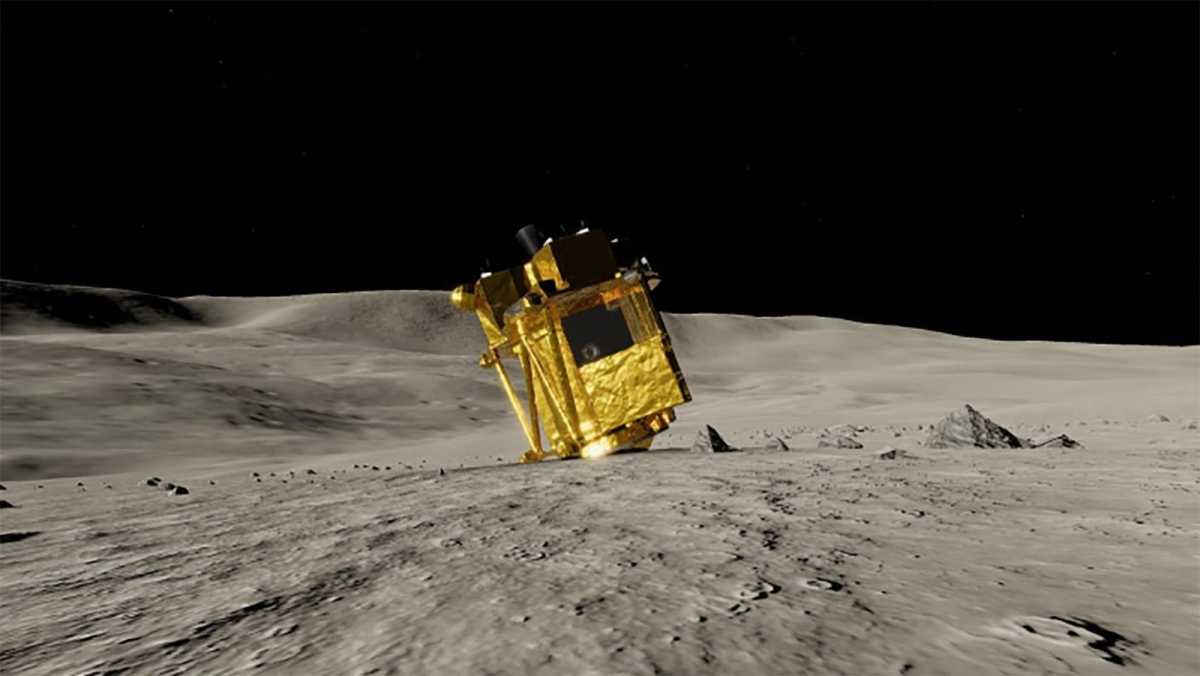News
Japanese Moon Lander Resumes Operations, Begins Detailed Study of Lunar Surface

The Japanese Space Agency, Jaxa, has resumed operations of its Moon lander after re-establishing contact on Sunday night. The lander, named Slim, initially faced a power issue due to an improper landing angle. However, after conserving battery power, the craft has now been ‘awoken’ by a change in sunlight direction. Slim has begun studying the lunar surface in detail and is transmitting new images to Earth. This analysis could provide valuable information for future Moon missions.
The craft was captured in a picture taken by the small robot, Sora-Q, as it lay face-down on the lunar surface. Slim’s solar panels were unable to generate power, prompting the decision to put the lander into sleep mode. However, the craft has now resumed operations, allowing the mission team to study new images of the landing site. Each rock in the area has been given the name of a dog breed to indicate its size. The lander’s Multi-Band Camera (MBC) is able to capture images that reveal the composition of the rocks.
According to Dr Simeon Barber of Open University, the MBC camera responds differently to each mineral in the rock, aiding scientists in building a picture of the Moon’s history. By distinguishing whether the rock, dubbed ‘Toy Poodle’, is different from the surrounding rocks, it could suggest it was transported there by an impact event. This detailed geological information can also help identify substances on the lunar surface that could be used for future missions.
It remains uncertain how long Slim will be able to operate, as the duration of its operation depends on the angle of the Sun and the power generated by the solar panels. However, Jaxa has already achieved its goal of achieving a precise landing within 100m of the target site, which is on the slopes approaching Shioli Crater, just south of the Moon’s equator. This successful mission sets Japan as the fifth country to land a spacecraft safely on the Moon.
NASA‘s Lunar Reconnaissance Orbiter (LRO) has been monitoring the situation, providing valuable insights into the targeted landing site. The SLIM mission aims to gather unprecedented information about the moon’s geological composition and origins.












